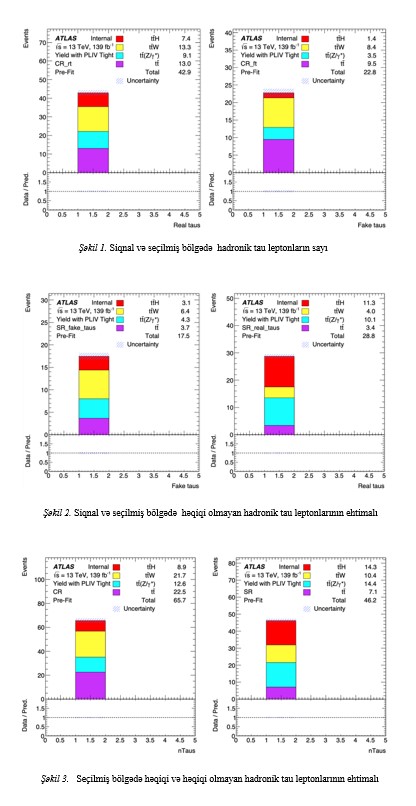ABSTRACT
This paper describes a algorithm to identify the visible decay products of hadronic tau decays (τhad-vis) in the Standard Model Higgs boson produced in association with a
top quark pair in multilepton final states with two light leptons with same-sign electric charges and one hadronically decaying tau lepton, labeled as 2LSS1τhad
at √s=13 TeV. The algorithm is based on recurrent neural networks (RNN) employing information from reconstructed charged-particle tracks and clusters of energy in the
calorimeter associated to τ had-vis candidates as well as high-level discriminating variables. The expected performance of this algorithm is evaluated in simulated
proton–proton collisions at √s=13 TeV and compared to a BDT-based approach.
Keywords: Fake Factor method, Hadronic τ lepton, RNN, traces of charged particles
UOT: 539.1
DOI:-
Received: 20.02.2023
AUTHORS & AFFILIATIONS
Institute of Physics Ministry of Science and Education Republic of Azerbaijan, 131 H.Javid ave, Baku, AZ-1143, Azerbaijan
E-mail: nguseynov@jinr.ru
Graphics and Images

Fig.1-2-3
|
REFERENCIES
[1] M. Tanabashi et al.. Review of Particle Physics, Phys. Rev. D 98, 2018, 030001.
[2] G.Aad, B. Abbott et al. Reconstruction of hadronic decay products of tau leptons with the ATLAS experiment. Eur. Phys. J. C 76, 295, 2016. https://doi.org/10.1140/epjc/s10052-016-4110-0
[3] G. Aad, B. Abbott et al., Reconstruction, Energy Calibration, and Identification of Hadronically Decaying Tau Leptons in the ATLAS Experiment for Run-2 of the LHC, ATL-PHYS-PUB-2015-045,2015,p.1-25.
[4] G. Aad, B. Abbott et al., Measurement of the tau lepton reconstruction and identification performance in the ATLAS experiment using pp collisions at √s=13TeV, ATLAS-CONF-2017-029, 2017, p.1-44.
[5] G. Aad, B. Abbott et al., Identification of hadronic tau lepton decays using neural networks in the ATLAS experiment, ATL-PHYS-PUB-2019-033, 2019, p.1-15.
[6] J.H. Friedman. Stochastic gradient boosting, Computational Statistics & Data Analysis, 38(4), 2002, 367-378. http://www.sciencedirect.com/science/article/pii/S0167947301000652.
[7] G. Aad, B. Abbott et al.. Tools for estimating fake/non-prompt lepton backgrounds with the ATLAS detector at the LHC, CERN-EP-2022-214, 30th November 2022
[8] G. Aad, B. Abbott et al.. Analysis of tt H and ttW production in multilepton final states with the ATLAS detector. ATLAS-COM-CONF-2019-062, 2020, p.1-38.
|
